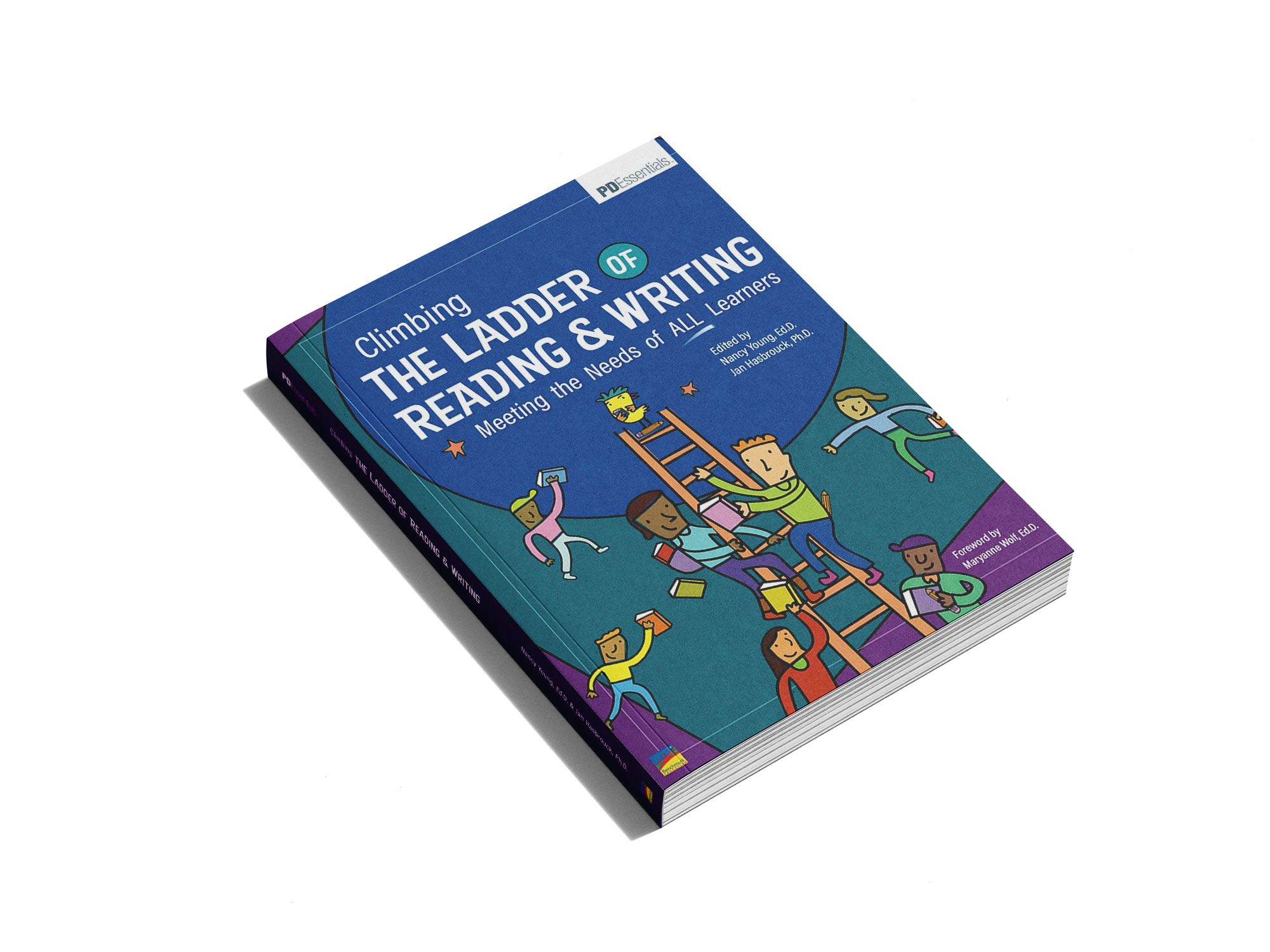Nancy Young, Ed.D.
Reading | Writing | Learning
General Reading &
Writing Resources
Nancy Young, Ed.D.
Reading | Writing | Learning
General Reading &
Writing Resources
The New book
co-edited by Nancy Young and Jan Hasbrouck
Climbing THE LADDER OF READING & WRITING
Meeting the Needs of ALL Learners
Chapters on general reading and writing instruction in Climbing THE LADDER OF READING & WRITING:
Meeting the Needs of ALL Learners
Ch. 2: A Closer Look (Nancy Young)
Ch. 3: Instructional Implications (Margie Gillis/Nancy Young)
Ch. 4: Data-Informed Instruction (Jan Hasbrouck)
Ch. 5: Managing Differentiated Instruction (Vicki Gibson)
Ch. 14: Older Students (Christy Austin/Elizabeth Stevens/Sharon Vaughn)
Ch. 18: Home-School Connections (Amy Fleisher/Julie Bedell)
Ch. 19: Technology (Kathleen Puckett)
Ch. 20: Teacher Development (Tiffany Peltier/Erin Washburn)
Chapters on environmental factors that can impact reading and writing instruction in Climbing THE LADDER OF READING & WRITING: Meeting the Needs of ALL Learners
Ch. 15: Variations of English (Kymyona Burk/Casey Sullivan Taylor)
Ch. 16: Multilingual Learners (Gairan Pamei/Zebedee Cheah/Jing Tong Ong/Catherine McBride)
Ch. 17: Socioeconomic Factors (Steve Dykstra)

Additional Recommended Books
Reading
Language at the Speed of Sight: How We Read, Why So Many Can’t, and What Can Be Done About It.
Seidenberg, M. (2017).
The Cognitive Foundations of Reading and Its Acquisition: A Framework with Applications Connecting Teaching and Learning
Hoover, W., & Tunmer, W. (2020).
Reading in the Brain: The Science and Evolution of a Human Invention.
Dehaene, S. (2009).
Writing
Powerful Writing Strategies for All Students.
Harris, K. Graham, S., Mason, L., Friedlander, B. (2008).
Teacher’s Guide to Effective Sentence Writing
Saddler, B. (2012).
Differentiating Instruction
A Teacher’s Guide to Flexible Grouping and Collaborative Learning. Brulles, D. & Brown, K. (2018)
Videos / Articles / Reports
General:
Ending the Reading Wars: Reading Acquisition From Novice to Expert.
Where Does The Science Of Reading Approach Go From Here?
Video on How the Brain Learns to Read – Dr. Stanislas Dehaene.
Statistical Learning
Statistical Learning Is Related to Reading Ability in Children and Adults.
The impact of language experience on language and reading: A statistical learning approach.
Differentiation:
A Longitudinal Cluster-randomized Controlled Study On the Accumulating Effects of Individualized Literacy Instruction
on Students’ Reading from First Through Third Grade.
Differentiated Literacy Instruction: Boondoggle or Best Practice?
Individualizing Student Instruction in Reading: Implications for Policy and Practice.
Individualizing Teaching in Beginning Reading.
Meta‐analysis Findings on Grouping Programs.
Preschool Instruction and Children’s Emergent Literacy Growth.
Reading Comprehension and Fluency Levels Range Across Diverse Classrooms:
The Need for Differentiated Reading Instruction and Content.
Writing:
Changing How Writing is Taught.
POW Plus TREE Equals Powerful Opinion Essays.
Teaching elementary school students to be effective writers: A practice guide.
Writing Next: Effective Strategies to Improve Writing of Adolescents in Middle and High Schools.
Assessment:
Understanding and Assessing Fluency (Jan Hasbrouck).
Fluency Norms Chart (Hasbrouck & Tindal 2017 Update).
